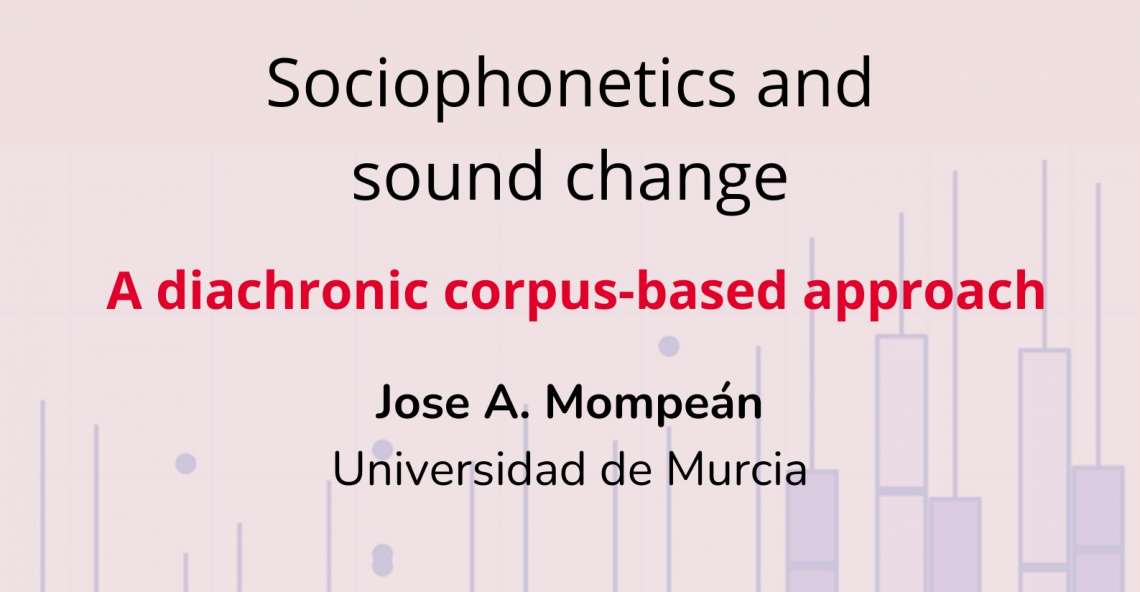Sociophonetics and sound change: A diachronic corpus-based approach
José a. Mompeán (Universidad de Murcia), 13 de marzo de 2024, 15:30 pm
5 mar 2024 - 11:13 CET
Sociophonetics and sound change: A diachronic corpus-based approach
Sound change, also known as historical/diachronic phonology, is a branch of linguistics that examines how speech sounds evolve over time within languages. On the other hand, sociophonetics is a branch of sociolinguistics that examines the relationship between social factors and speech sounds. While sound change has traditionally been analyzed as merely a product of system-internal factors, sociophonetics is uncovering the crucial interconnection of many sound changes with social groups and sociolinguistic aspects of language users. While the study of sound change was traditionally carried out using the comparative method and written materials, this enterprise is currently facilitated by the increasing availability of recorded materials from previous decades as well as the availability of corpus tools and longitudinal corpora.
The present talk discusses the use of spoken diachronic corpora in study of the relationship between sound change and social changes/sociolinguistic aspects of language use over time. It describes the sampling criteria used in building a longitudinal spoken corpus of the British variety known as ‘Received Pronunciation’ (RP): the DIACSEN corpus. It then exemplifies the use of materials from this corpus to study two sound changes in British English, one complete (GOOSE-fronting) and another in progress (‘linking’ /r/ ≅ ‘intrusive’ /r/). The first study analyzes the trajectory of the GOOSE vowel in a sample of RP speakers over ten decades (1920s-2010s). The second study at the use of /r/-sandhi in the speech of Queen Elizabeth II over seven decades (1950s-2010s) and a reference group over ten (1920s-2010s).
The results of both studies are interpreted considering the social changes in the social composition of the RP group in the second part of the twentieth century, involving increased dialect contact (Study 1) and the prestige/stigmatization of linguistic forms (Study 2). The results also show how an individual (Queen Elizabeth II) may follow community trends (e.g., use ‘linking’ /r/ over time) but differ from the community in other respects (zero use of ‘intrusive’ /r/).

